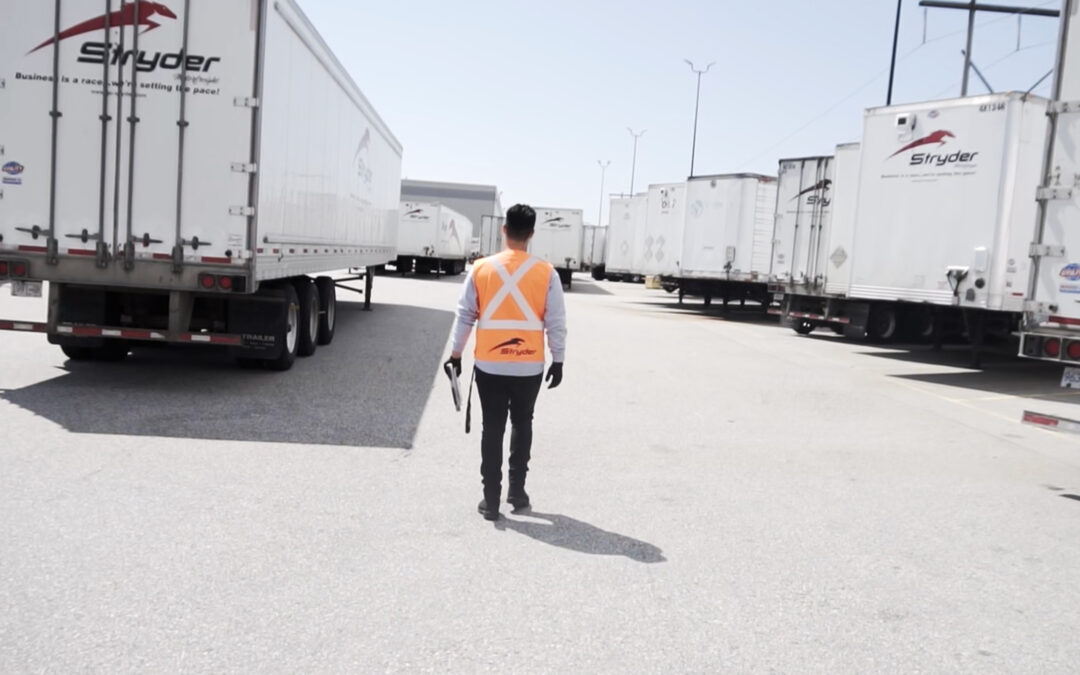Warehouse safety is a crucial part of the logistics industry, and ensuring that your workers are safe is a priority, especially after the recent COVID-19 outbreak. Situations like this have shown us how important it is to care for human life, especially in the workplace!
Mishaps can occur anywhere in the warehouse, from the moment goods come into the moment they go out the door! In the US alone, there were 141,320 work-related injuries reported!
Companies like Stryder, as a warehousing service provider, apply several different strategies to keep mishaps at a minimum. The proper method to avoid this is to first understand how to measure safety and how to prevent accidents from occurring in the first place.
Measuring Safety
But how can a warehouse manager measure safety? Isn’t it subjective and has more to do with guidelines?
Well, it certainly does. That doesn’t mean that there are several things you can quantify and measure to see where your company is heading safety-wise. Start measuring things like:
Number of accidents
While this is a lagging indicator (meaning that it can only show past events), it is the most obvious metric for tracking your warehouse safety. A lower number of accidents means that your safety measures are relatively better.
DART
This is a metric developed by OSHA, the Occupational Safety and Health Administration. It refers to the Days Away, Restricted, or Transferred. This is a metric that measures how many days an employee is absent due to work-related injuries, placed under restrictions, or transferred to another job because of a disability brought on by work.
Employee Insights
A good warehousing service provider incorporates feedback from their employees! Always ensure that you are recording what your employees have to say about the working conditions in the warehouse and how they could be improved.
While some employees may feel a little uncomfortable being upfront about any concerns, the best solution would be to form a team that incorporates the feedback into actionable.
Top 5 ways to improve safety in the warehouse
Some of the best ways to improve safety is to put in measures that prevent anything from happening. How do you achieve this? Keep reading!
Keep everything organized
A messy workplace leads to accidents, and the best way to avoid this is to dispose of trash immediately. Try to ensure that the warehouse remains free of any dirt and spills that can lead to slips and falls.
Computer equipment should have tidied up cables, and nothing that could lead to a fire hazard. Creating an organized layout plan for the warehouse also reduces the risk of bottlenecks and accidents. Try to determine a flow in the warehouse and group your stock accordingly. More tips can be found here if you really want to organize your warehouse effectively.
Try to create safety checklists for all procedures, which are maintained by staff when operating anything that has a risk of becoming an accident.
A complete walkthrough is available on the Canada Occupational Health and Safety Regulations page on the Govt. of Canada website. This is extremely relevant and is applicable to any warehouse in Canada.
Identify and prevent potential hazards.
Create a checklist, or download a JHA report. This is a Job Hazard Analysis report, and it should be used for every warehouse role.
Next, break your warehouse into logical sections, as mentioned before, and try to perform a Risk Assessment for each section. You can do this with an RAF form (Risk Assessment Form).
Based on the information you gather from these reports, you will need to establish health and safety regulations, as well as emergency procedures, which is the next point.
Create emergency protocols and have drills.
Safety drills might seem like a waste of time for some, but they are invaluable when a crisis occurs. Have safety protocols established for any sort of mishap, such as an injury, a fire, a chemical spill, etc?
This should be followed by monthly or biweekly safety drills to ensure that employees know what to do in any emergency.
Also, ensure that first aid and any relevant protective equipment are ready and accessible at all times. The following items are a requirement for a first aid kit:
- Adhesive bandage and tape
- Medical gloves
- Antibiotic application
- Roller bandage (2 and 4 inches)
- Antiseptic
- Scissors
- Burn to dress
- Splint
- Cold pack
- Sterile/Trauma pads
- Eye/Skin wash
- Tourniquet
- First aid guide
- Triangular bandage
- Hand sanitizer
Certified personnel
This is extremely important since it influences how an accident may occur, often with devastating consequences. Whether it’s forklifts, conveyors, or pallet jacks, ensure that the people using them are certified.
Regular training and evaluation will help to reduce incidents, as any worker deemed unfit to operate a machine can be restricted to handling other equipment.
Aside from this, make sure that this personnel don’t have to endure any obstacles while operating this equipment. Part of being organized includes having a dedicated forklift path, as well as taped-out spaces for pallet loading.
Learn from the Best
Try to benchmark and identify the businesses that have the best safety and health regulations in place and try to learn from them. At Stryder, we pride ourselves on having an extremely versatile workforce that is able to maintain an efficient completion rate while observing safety and hazard regulations. Any warehousing services agreement should have a separate safety clause, in our opinion, and we try to achieve complete safety for each of our employees.
The main responsibility of any storage and logistics organization is to guarantee warehouse safety. By giving priority to safety precautions, putting in place rigorous training programs, maintaining a clean, ordered environment, and promoting a safety culture, organizations may safeguard their personnel, assets, and reputation.
Safety standards must be committed to continuous improvement and proactive incident investigation in order to maintain and improve them. By incorporating these strategies into daily operations, businesses may encourage a safety culture and foster an accident-free warehouse workplace.


Recent Comments